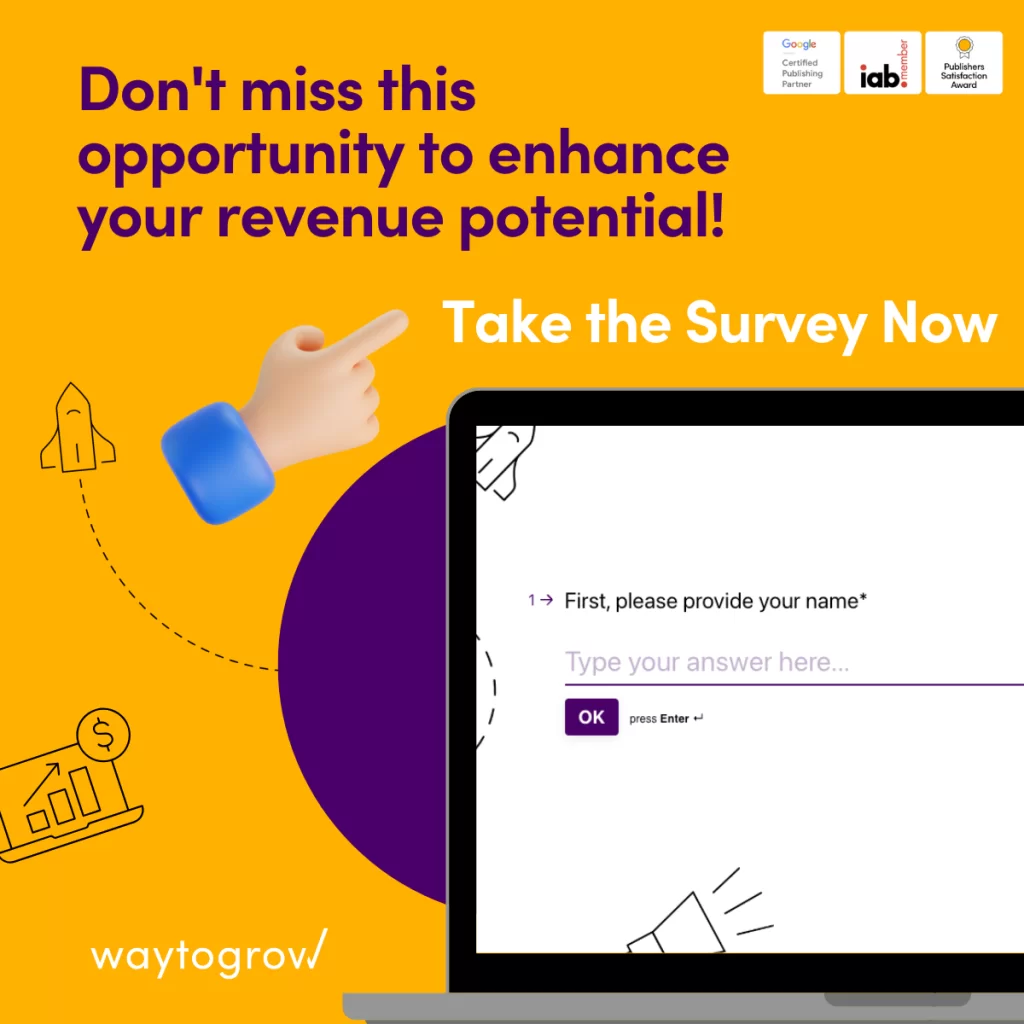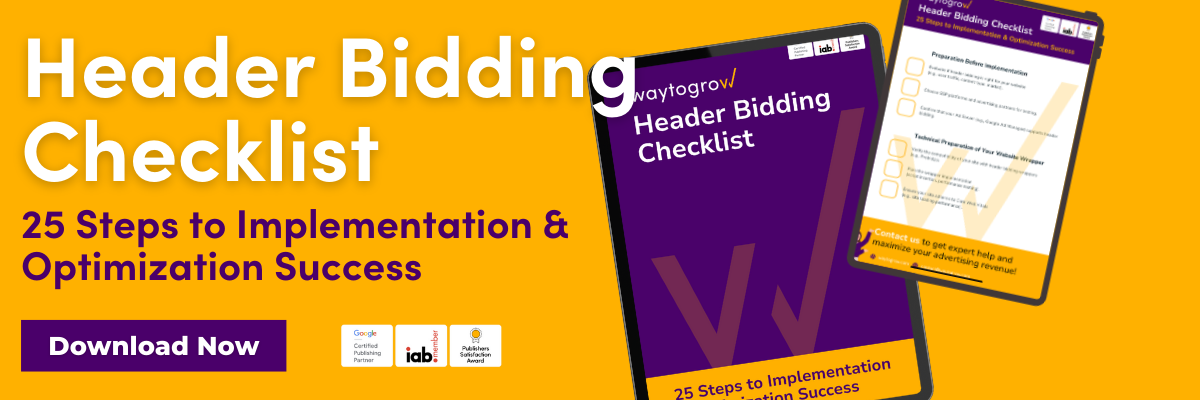- What are Publisher Provided Signals?
- Maximizing digital advertising: how publishers can leverage first-party data
- Understanding publisher provided signals (PPS) in Google Ad Manager
- The Future of Ad Requests: Navigating the Shift from Third-Party Cookies to First-Party Data
- Enhancing Audience Segments with Publisher-Provided Signals: A Guide for Digital Publishers
- Empowering Publishers: Strategies to Control and Send Publisher-Provided Signals Effectively
- Revolutionizing Ad Personalization with Google’s Publisher Provided Signals Beta
Unlock the full potential of your first-party data by leveraging the power of Google’s Publisher Provided Signals (PPS) Beta. As a publisher, utilizing these identifiers can significantly enhance your ad targeting capabilities, ensuring that your content reaches the most relevant audience. Embrace the future of advertising with publisher provided signals and make the most out of your data today.
What are Publisher Provided Signals?

Publisher Provided Signals (PPS) is a recently introduced beta feature in Google Ad Manager. This functionality allows publishers to effortlessly utilize their first-party and contextual data in programmatic auctions. PPS facilitates the organization of first-party data into uniform audience or contextual segments.
Navigating the evolving landscape of digital advertising, many publishers find themselves at a crossroads, grappling with the diminishing utility of third-party cookies and the pressing need to harness the power of first-party data more effectively. Enter the realm of Google’s Publisher Provided Signals (PPS), a beacon of hope for those looking to refine ad targeting and elevate their content’s reach. This innovative feature within Google Ad Manager stands as a testament to the future of advertising, where the strategic use of first-party data and publisher provided signals becomes paramount. By embracing these tools, publishers can not only address the challenges posed by the industry’s shift but also unlock unprecedented opportunities to connect with their audience in the most relevant and impactful ways.
Maximizing digital advertising: how publishers can leverage first-party data
In the dynamic realm of digital advertising, the shift towards turning to first-party data is not just a trend but a strategic necessity for publishers aiming to maximize digital advertising efforts. By harnessing publisher provided identifiers and integrating Google’s Publisher Provided Signals, publishers unlock a treasure trove of audience and contextual data that is pivotal for crafting personalized ad experiences. This approach not only enhances the ad experience by ensuring the delivery of relevant ads but also sets the stage for improving programmatic monetization across multiple sites and apps. Leveraging ad manager’s first-party data solutions empowers publishers to navigate the complexities of the digital advertising ecosystem effectively, ensuring that every ad served resonates with the intended audience, thereby elevating the overall impact of their digital advertising strategies.
Understanding publisher provided signals (PPS) in Google Ad Manager
Diving deeper into the mechanics of Google Ad Manager, it becomes evident that the essence of Publisher Provided Signals (PPS) lies in their ability to bridge the gap between first-party audience and contextual data and the programmatic advertising ecosystem. By allowing publishers to map their first-party data into consistent audience or contextual segments, PPS empowers them to communicate valuable information directly to programmatic buyers. This direct line of communication ensures that the ads served are not only relevant but also secure, adhering to privacy standards and enhancing user trust. The strategic integration of secure signals with programmatic buyers amplifies the effectiveness of ad campaigns, making it a critical component for publishers aiming to improve programmatic monetization.
The utilization of Google’s Publisher Provided Signals by publishers paves the way for a more personalized ad experience, leveraging first-party data for ads personalization. This approach not only elevates the ad experience for users but also significantly boosts the potential for higher engagement rates and, consequently, better monetization outcomes. By providing content and audience signals to programmatic buyers, publishers can ensure that their inventory is matched with the most appropriate ads, thereby maximizing the relevance of each ad impression. The ability to serve relevant ads through Ad Manager, based on robust first-party data, marks a pivotal shift in how publishers can use data to enhance their digital advertising strategies and secure a more lucrative future in the digital advertising landscape.
The Future of Ad Requests: Navigating the Shift from Third-Party Cookies to First-Party Data

As the digital advertising ecosystem braces for the imminent phase-out of third-party cookies, the emphasis on first-party data has never been more critical. Publishers equipped with Google’s Publisher Provided Signals are at the forefront of this transition, poised to redefine how ad requests are made and fulfilled. By leveraging these powerful tools, publishers can map their first-party data and securely share signals with programmatic buyers, ensuring that every ad served is deeply rooted in genuine user interest and purchase intent. This shift not only promises to enhance the relevance of ads but also significantly improves programmatic monetization by aligning ad content with the user’s current needs and behaviors across multiple sites. The ability to scale their first-party audience effectively allows publishers to navigate the shift from reliance on third-party cookies to a more sustainable and privacy-compliant strategy of using first-party signals. In this evolving landscape, Google’s Publisher Provided Signals emerge as a vital component for publishers aiming to maximize the efficacy of their ad requests and thrive in a post-cookie world.
Enhancing Audience Segments with Publisher-Provided Signals: A Guide for Digital Publishers
For digital publishers aiming to enhance audience segments, the strategic integration of Publisher-Provided Signals into their data ecosystem marks a significant leap towards achieving this goal. By choosing to map your first-party data and leverage their first-party data, publishers can create highly refined audience segments that are rich in contextual and behavioral insights. This granularity which facilliate the support for relevant ads being serve from Google Ad Manager connected with the delivery of personalized content thereby elevate the user experience significantly. The ability to share their first-party insights directly with programmatic buyers enhances the value proposition of the publisher’s inventory, making it more attractive for advertisers seeking to target specific user profiles with precision.
Moreover, the use of Google’s Publisher Provided Signals allows for a more seamless interaction between publishers and advertisers. By enabling publishers to pass the signals directly to programmatic buyers, a direct channel of communication is established, ensuring that the ads displayed are perfectly aligned with the intents across multiple sites. This direct exchange of high-quality, actionable data between publishers and buyers not only helps publishers and buyers to optimize their strategies but also may significantly improves programmatic monetization outcomes. The emphasis on utilizing user characteristic and contextual data to improve programmatic targeting underscores the pivotal role that Publisher-Provided Signals play in the modern digital advertising landscape, empowering publishers to maximize their revenue potential while delivering superior ad experiences.
Empowering Publishers: Strategies to Control and Send Publisher-Provided Signals Effectively

To effectively harness the power of Google’s Publisher Provided Signals, publishers must adopt strategic measures that enable them to control and send publisher-provided signals with precision. By taking control of their first-party data, publishers can transform this valuable asset into consistent audience segments, thereby enhancing their ability to leverage first-party data for improved programmatic monetization. The key lies in the meticulous mapping of this data, utilizing solutions available in Google Ad Manager like key-values targeting. This approach not only empowers publishers to share their first-party insights with programmatic buyers but also ensures that the signals with programmatic buyers are transmitted securely and efficiently, maximizing the relevance and impact of each ad served.
Moreover, the ability for a publisher to pass the signals directly to programmatic buyers facilitates a more targeted ad delivery, significantly enhancing the ad experience for users while boosting engagement rates. Implementing strategies that allow for the effective sending of publisher-provided signals requires a deep understanding of the tools and solutions available in Google Ad Manager. By doing so, publishers not only help publishers and buyers to better align their strategies but also gain unprecedented control of their first-party data, setting the stage for a more lucrative and user-centric advertising ecosystem. Embracing these strategies enables publishers to not just participate in the digital advertising landscape but to thrive within it, leveraging their unique position to better leverage first-party data and drive forward the future of programmatic advertising.
Revolutionizing Ad Personalization with Google’s Publisher Provided Signals Beta
In the ever-evolving world of digital advertising, the introduction of Google’s Publisher Provided Signals Beta feature marks a significant milestone for publishers looking to revolutionize ad personalization. This beta feature but potential cornerstone of Google Ad Manager, allows publishers to categorize their first-party data into detailed audience and content taxonomies in a standarized way. By doing so, publishers can create a more nuanced and effective ad personalization strategy, ensuring that the ads displayed to users are not only relevant but also resonate with their preferences and behaviors. This level of ad personalization is critical in today’s digital landscape, where engaging users with meaningful content can significantly boost ad performance and, ultimately, revenue.
Moreover, the ability to send publisher-provided signals directly to Google demand partners and ad networks, without the risk of data leakage, empowers publishers to maintain control of their first-party data while maximizing its utility. The integration of these signals with Google’s vast advertising ecosystem means that publishers can leverage the comparability of data across different providers, enhancing the efficiency and effectiveness of their ad campaigns. By utilizing the Google Publisher Provided Signals Beta, publishers are not just preparing for a future without third-party cookies; they are actively shaping it, ensuring that their digital properties remain competitive and compliant with evolving privacy standards. For those looking to take full advantage of this feature, contact with us to understand the best practices and implementation strategies as a crucial step towards future ad personalization success.
Share on:










